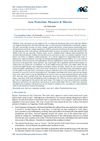Treatment of Keratosis Pilaris With 810-nm Diode Laser
November 2014
in “
JAMA dermatology
”
TLDR The 810-nm diode laser improves skin texture in keratosis pilaris but not redness.
The study evaluated the 810-nm diode laser for treating keratosis pilaris (KP) in a split-body, placebo-controlled randomized clinical trial with 23 patients (18 completed). Three laser treatments significantly improved skin texture and roughness/bumpiness (median score difference of 1, P = .004) but did not affect baseline erythema (P = .11). The combined score for erythema and roughness/bumpiness also showed significant improvement (P = .005). The laser was effective for KP in Fitzpatrick skin types I-III, though it did not address redness, indicating a need for combined treatments. Two participants experienced inflammatory hyperpigmentation, which resolved within three months. The study suggested the 810-nm diode laser as a promising treatment for nonerythematous KP, with further research needed for long-term benefits and effectiveness in darker skin types.




